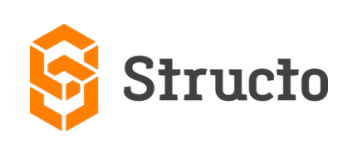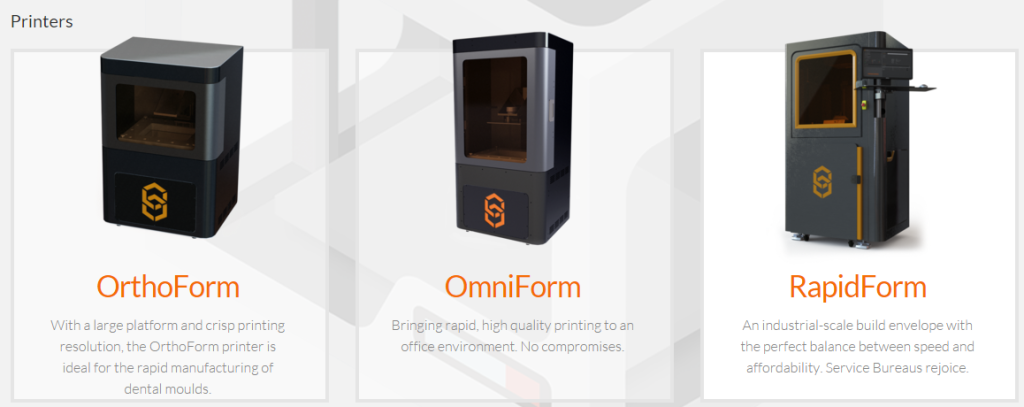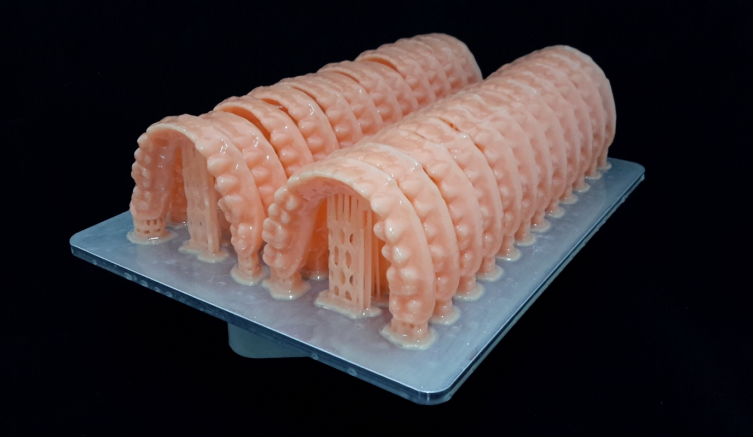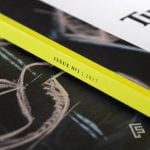 Just launching both the OrthoForm and OmniForm, Structo 3D is fleshing out their lineup even further, allowing these two new 3D printers to work in a complementary manner to their flagship RapidForm industrial printer, all just on display at Inside3D Singapore at the end of last month.
Just launching both the OrthoForm and OmniForm, Structo 3D is fleshing out their lineup even further, allowing these two new 3D printers to work in a complementary manner to their flagship RapidForm industrial printer, all just on display at Inside3D Singapore at the end of last month.
Structo 3D already has a very good thing going with their proprietary liquid crystal masking technology, allowing all of their 3D printers to operate at stunning speeds, up to ten times faster than other existing SLA machines. While the two new machines are smaller, Structo 3D plans to introduce them to their client base for higher speed printing.
The OrthoForm was created to meet the needs of the dental market, which is beginning to use 3D printing for many different applications. The OmniForm offers a larger build height and more versatility to clients like industrial designers, architects, the medical profession, and also to 3D printing service bureaus.
 Another great benefit to the liquid crystal masking technology, which it took Structo three years to develop, is that it lends itself much more easily to scalability for industrial uses—much more so than the other conventional SLA or DLP printing technologies. And no matter what size specifications they build their 3D printers to, users do not experience a deficit in the amazing speed.
Another great benefit to the liquid crystal masking technology, which it took Structo three years to develop, is that it lends itself much more easily to scalability for industrial uses—much more so than the other conventional SLA or DLP printing technologies. And no matter what size specifications they build their 3D printers to, users do not experience a deficit in the amazing speed.
“When we started three years ago, we were amazed at how slow 3D printing was despite commonly being referred to as a means of ‘rapid’ prototyping. Knowing that the lack of large scale printing at fast speeds would limit the industry moving forward, we completely relooked at how this could be achieved. As a result, we came up with a new, faster method to SLA printing which no one else was doing, and yet could still provide the dimensional accuracy people expect. We’re excited at the possibilities of this technology,” says Huub van Esbroeck, one of Structo’s four founders.
For the dental markets especially, speed is crucial, and is the major angle which they find attractive in a 3D printer like the OrthoForm, especially for making devices like aligners and retainers. Traditionally, these were much more expensive, but with a high-speed printer like the OrthoForm, they can save on the bottom line significantly, hopefully passing that savings along to patients as well.
“Even individual clinics and dental labs may print hundreds of molds per week,” states the company in their latest press release. “For these types of customers, Structo’s ability to print up to ten dental models in under 30 minutes opens up a new world of possibilities.”

(Platform dimensions: 200 x150 x100mm. Layer Thickness: 50 micrometers.)
The OrthoForm is able to 3D print up to 28 dental model arches in under two hours, with an average printing time of nine minutes per arch achieved at high resolutions.
Adding to the total user and customer experience, Structo also makes their own material in-house under the Structomer name. They have also teamed up with other 3D printing material providers and renowned research institutes to provide a range of biocompatible and engineering materials.
“We believe that making our own materials is vital to helping our technology advance. We’re working some interesting advancements with our materials and look forward to announcing those soon,” shares Huub.
We’ve followed Singapore’s Structo 3D long enough to know that they are a class act—and they offer a comprehensive world of 3D printing for their users around the world. Last we heard, which wasn’t long ago at all, the hardware manufacturer was teaming up with Materialise to create a new Structo build processor meant to work exclusively with their SLA 3D printers. Fast forward one month later though, and they are on the fast track with two more 3D printers. It shouldn’t be long before we have more news regarding materials as well. Discuss this new technology in the New Structo 3D Printers forum over at 3DPB.com.
Tagged with: 2015 Annual Meeting of the American Academy of Orthopaedic Surgeons • 3D dental printers • industrial 3d printing• materialise • OrthoForm 3D Printer • Structo 3D
[“source-3dprint”]











